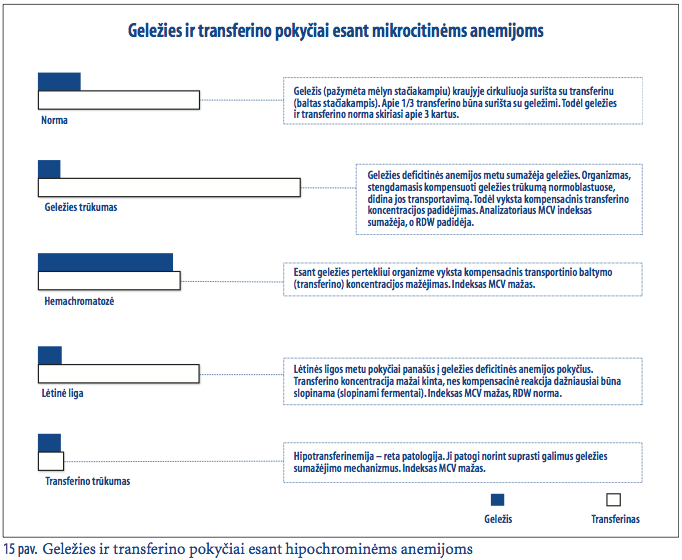Iron
Norm
Women 6.6–26 µmol/l
Men 10.6–28 µmol/l
Children
newborns 6.4–33 µmol/l
children up to 6 months 6.4–28 µmol/l
children from 7 months 7.7–33 µmol/l
Synonyms: total iron
Serum
Red lid
Iron is part of hemoglobin and myoglobin. Serum iron is related to the protein transferrin. When treating with iron, the following indicators change rapidly: transferrin, TIBC, UIBC. The indicator of iron reserves – ferritin – changes more slowly. Ferritin is the best (it has the highest specificity and sensitivity) laboratory indicator for diagnosing iron deficiency or excess. In case of iron deficiency, these indicators should be determined before starting treatment. However, even after starting treatment, iron deficiency can be indirectly suspected. In case of iron deficiency, MCH and MCV indicators are below the norm. The lower these indicators, the more severe the iron deficiency. During treatment, the RDW indicator of the hematological analyzer may increase – a sign of red blood cell regeneration. In the treatment of iron deficiency, the MCH and MCV indicators return to normal within a few weeks or months. Iron deficiency occurs much more frequently than excess. Iron deficiency often becomes apparent during pregnancy, especially if there has not been a significant gap between pregnancies. During iron deficiency, leukopenia and thrombocytopenia may occur. Iron is poorly absorbed in the absence of vitamin C. The difference in iron levels between men and women is determined by testosterone – it increases erythropoietin synthesis in the kidneys. Therefore, sexual differences do not become apparent in childhood and in the involution period.

Source | Handbook of Basic Laboratory Tests | Doctor of Medical Sciences Gintaras Zaleskis
